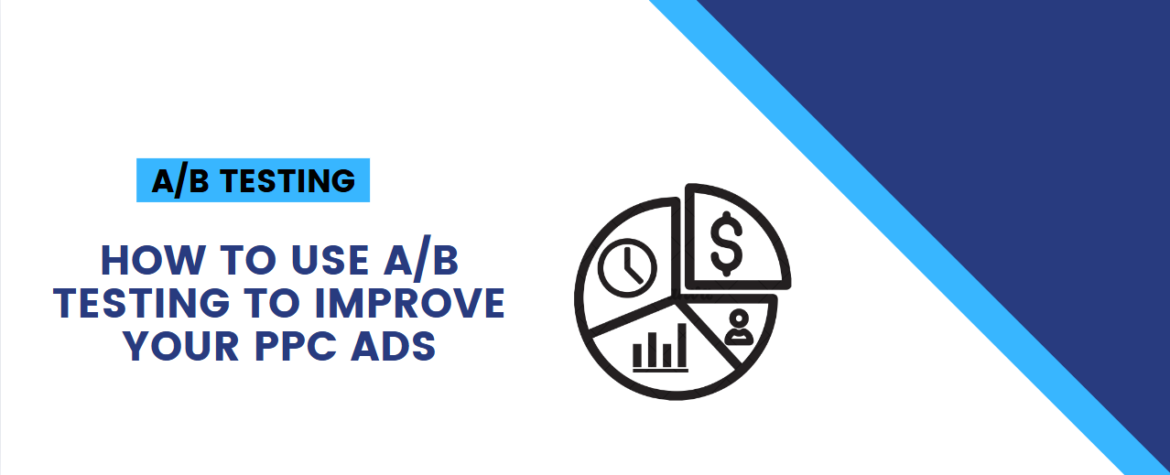In the world of digital advertising, pay-per-click (PPC) ads are one of the most powerful ways to drive traffic to your website and generate leads. However, to truly make the most out of your PPC campaigns, you need to continuously optimize them. One of the best ways to do this is through A/B testing.
So, what exactly is A/B testing? In simple terms, it’s a method where you create two versions (A and B) of the same ad, but with slight differences, and then run both ads to see which one performs better. This allows you to understand what works and what doesn’t, helping you fine-tune your PPC ads for maximum impact.
In this blog, we’re going to walk through how you can use A/B testing to improve your PPC ads and boost your results. We’ll break things down into easy-to-follow steps and sprinkle in some stats to show just how important A/B testing is for your PPC campaigns.
Why A/B Testing Is Crucial for PPC Success
Let’s start by answering an important question: Why is A/B testing so important?
Well, think about it. When you create a PPC ad, you’re not just throwing something together and hoping it works. Every part of the ad—the headline, the copy, the call-to-action (CTA), and even the landing page—plays a role in whether or not people click on your ad. But how can you be sure which element is driving the best results? That’s where A/B testing comes in.
In fact, companies that use A/B testing see a 20% improvement in conversion rates on average. With that kind of potential to boost performance, A/B testing is something no marketer should overlook.
Step 1: Choose What to Test
Before you dive into the world of A/B testing, you need to decide what exactly you want to test. A/B testing is about making small changes to your ads to see what works best. Here are a few elements you can test in your PPC ads:
- Ad Headlines – Your headline is the first thing people see, so it’s crucial to make it catchy and relevant. Try testing two different headlines to see which one grabs more attention.
- Ad Copy – The body text of your ad can make or break it. Try experimenting with different wordings to see what resonates best with your audience.
- Call-to-Action (CTA) – Your CTA tells users what to do next, so it’s worth testing different CTAs to find the most effective one. For example, “Shop Now” versus “Get Started” might perform differently depending on your audience.
- Display URL – The URL shown in your ad can influence trust and clicks. A URL with relevant keywords might encourage more clicks compared to a generic one.
- Ad Extensions – Testing different types of ad extensions (like sitelinks, callouts, or structured snippets) can give you insights into what extra information users need to take action.
A study found that about 65% of marketers say the headline of an ad is the most critical part to test first. So, starting with headlines might be a great place to begin your A/B testing journey.
Step 2: Create Two Variations
Once you’ve chosen what to test, the next step is to create two variations of the ad. These variations should be as similar as possible, except for the one element you’re testing.
For example, let’s say you’re testing the headline. Here’s what the two variations might look like:
- Ad A: “Buy Now and Save 20% on Your First Order”
- Ad B: “Get 20% Off Your First Order—Shop Today!”
In this case, you’re testing the different phrasing of the headline. You’re keeping everything else the same—ad copy, CTA, and landing page—to isolate the impact of the headline.
Here’s the key to A/B testing: the changes should be small, but significant enough to notice a difference.
Step 3: Run Your Test
Now it’s time to run your test. When you’re setting up your A/B test, there are a few best practices to keep in mind:
- Test for a significant amount of time: Ideally, you want to run your A/B test for at least a week. This gives you enough data to make sure the results aren’t skewed by any short-term fluctuations in performance.
- Use the same budget for both ads: Make sure both variations get an equal amount of impressions. This helps ensure the test is fair and that you’re comparing apples to apples.
- Ensure enough traffic: For your A/B test to be valid, you need to have enough traffic to generate meaningful results. If you have a very small budget or low traffic, you might not get conclusive results.
Step 4: Analyze the Results
After running the test for a sufficient amount of time, it’s time to look at the results. Here’s how to analyze your A/B test:
- Look at the key metrics: The most common metrics to evaluate in a PPC campaign are click-through rate (CTR), conversion rate, and cost-per-conversion. For example, if you’re testing headlines, compare the CTR for each ad to see which headline performed better in terms of attracting clicks.
- Statistical significance: This is an important factor in A/B testing. If your test results show a clear winner, that’s great. But if the difference between Ad A and Ad B is small, you’ll want to make sure the results are statistically significant before drawing any conclusions.
- Don’t jump to conclusions too early: A/B testing can take time. Sometimes, the winner is obvious right away, but other times, the results need a bit of time to settle. Patience is key!
Step 5: Implement What You’ve Learned
Once you’ve identified which ad variation performs better, it’s time to put your findings into action. Update your PPC ads with the winning version and continue to monitor performance.
But don’t stop there. A/B testing is an ongoing process. Once you’ve made improvements based on one test, there’s always room for more optimization. This could mean testing different CTAs, adjusting your bidding strategy, or testing a new landing page.
The Power of Continuous Testing
A/B testing is not something you do once and forget about. The most successful PPC campaigns are built on continuous testing and optimization. In fact, companies that perform ongoing A/B tests see up to 49% higher conversion rates compared to those who don’t.
Every change you make, no matter how small, is an opportunity to learn and improve your ad performance. For example, HubSpot found that testing just one element (like a headline or CTA) could increase conversion rates by up to 40%. That’s a huge improvement with just a small tweak!
Common A/B Testing Mistakes to Avoid
While A/B testing can lead to significant improvements in your PPC ads, there are a few common mistakes you should watch out for:
- Testing too many changes at once: If you change multiple elements (like the headline, copy, and CTA all at once), it can be hard to tell which change made the difference. Always test one element at a time.
- Not waiting long enough: Running a test for just a few days might not give you enough data to make an informed decision. It’s important to run tests for a sufficient period of time to get reliable results.
- Ignoring statistical significance: Just because one ad performs slightly better than the other doesn’t mean it’s statistically significant. Always check if the results are meaningful before you make changes.
Final Thoughts
A/B testing is one of the most effective ways to improve your PPC ads and get more out of your advertising budget. By testing different elements of your ads and optimizing based on real data, you can significantly increase your conversion rates and drive more sales or leads.
Remember, A/B testing is an ongoing process. The more you test, the more you’ll learn about what works for your audience. So don’t be afraid to experiment, make changes, and continuously optimize your PPC campaigns.


